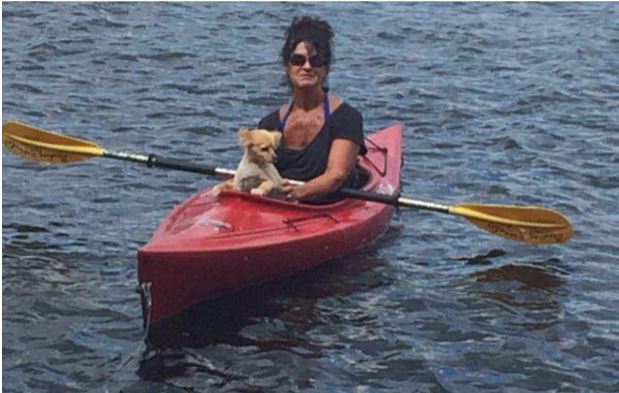This article was originally published in PINK Magazine.
Myths and legends help you find the yellow brick road to Oz and career fulfillment
Celia was the only female Vice President at her company. She’d noticed how vendors invited the male VP’s to football games all the time – but not her. As the daughter of a high school football coach, she loved the sport and had made her interest clear to her colleagues and vendors, to no avail. She knew it was important to get invited to the games for building relationships, but she didn’t know how to break in.
For help, she turned to leadership psychologist and coach Anne Perschel, Psy.D. “I asked her, ‘Who do you want to be?’ ” Perschel recalls. “Cinderella waiting for the prince to come, or Joan of Arc who went into battle and created a place for herself?” Celia immediately got it. She decided to create a tailgating event and invite her colleagues and vendors, both men and women. After that party, she was included in several other sports events and became part of the Monday morning post-game phone call circuit. This helped her develop closer relationships with vendors and, in turn negotiate better terms and deals for her company. She also broke tradition and made an important change to the culture.
Using archetypes like Cinderella and Joan of Arc can an be important tool in leadership coaching according to Perschel and other experts. “Myths and fairy tales conjure up powerful images,” says Perschel, who estimates that 40 percent of her colleagues use myths in coaching. “These are common stories, so everyone knows what you’re talking about. They’re shorthand and can help people better understand themselves and the resources they have to work with when confronting obstacles.
Men have long used archetypes from Ulysses to Luke Skywalker to pattern careers after – whether they know it or not, psychologists point out, since the hero myth is one that’s been a part of Western culture for millennia. The problem for women is that traditional myths about independent strong heroines are in such short supply. Some believe this is no accident as it helps to keep women from realizing their power. Indeed, women are more likely to be portrayed as needing to be rescued (Rapunzel, Sleeping Beauty) or scary and needing to be stopped. (Think Medusa with her hair of snakes.) Even Joan of Arc was burned at the stake.
Hero of Your Own Life
But the heroines are out there – especially if one is able to look beyond Homer and Virgil to the likes of L. Frank Baum and Lewis Carroll. Like the ancient myths, contemporary stories can be very compelling, helping “to unravel and knit the psyche in the strongest possible terms,” says Clarissa Pinkola Estes, Ph.D., psychoanalyst and author of the best-selling Women Who Run with the Wolves: Myths and Stories of the Wild Woman Archetype (Ballantine, 1996). When used most effectively, these stories provide not an outward model to follow, but a mirror that helps the ordinary woman look to the champion hidden within and become the heroine of her own life story.
According to Perschel it helps that the stories, as guides, are open to interpretation on several levels and can apply to almost anyone – which is the whole point of myths. Take the story of Alice in Wonderland, for example. “It’s Alice’s curiousity that gets her down the rabbit hole, so she sees what is going on below the surface,” Perschel says, “Leaders have to be very curious and see things from different perspectives in order to survive. They won’t succeed long if they keep doing things the same old way. Interpreted on another level, women in business are charting new territory. They are not members of the predominant culture that set the rules of the game. They can and must see that culture more clearly in order to understand those rules. Alice’s journey in Wonderland is a metaphor for this experience.
Perschel also looks to more modern sources for inspirational myths to guide leaders, like Dorothy from The Wizard of Oz. “She’s a transformational leader,” Perschel says. “She’s on a journey toward a vision – the Emerald City. She convenes a team. She has a relational style of leading – not a patriarchal command and control style. She helps each person on the team realize that he has the very qualities for which he longs. Nowadays, leadership is about understanding people’s talents and motivations. It’s about connecting with your staff emotionally to get the best from them. Perschel firmly believes if women hadn’t entered the workplace in such great numbers, we wouldn’t be talking abut emotional intelligence.
Dorothy also thinks a great man (the wizard) is going to give her what she wants, but he really has very little power to do so, as do most CEOs. People must realize their own potential. Dorothy has a female mentor, Glinda the Good Witch, through whom she discovers her own power (the means to get back to Kansas, which was always in her own hands – or more literally on her own feet.)
The self as heroine and the female guide archetypes were especially helpful to Sandra Williams, an executive director for a conservation organization who was looking for a new career direction. (As one of Perschel’s clients she requested that we not use her real name.) Williams thought about running a performing arts center, drawing on her previous background as a producer, but there was not a lot of work available in her hometown. Through coaching she realized that she had been limiting herself by looking for a job that already existed rather than creating her own role.
Perschel also asked Williams to identify her own “Glinda.” “I have a dear friend who has her own business and is a real go-getter,” Williams says. “She tells me to follow my heart.” Williams ultimately decided to offer performance art programs at retirement communities and assisted living centers. “Lots of boomers are retiring,” she says. “There is a market for top notch arts programs in those communities.” Williams has been discussing the idea with her Glinda and is using her feedback and support to develop a business plan.
Why are we drawn to myths just as men are, despite having fewer stories of our own?” “The value of story has little to do with gender. Story has to do with soul,” Estes says. “Once a person is ensouled, she can, with wit and will and a certain amount of wildness, achieve, create and unleash most anything of goodness and worth.”
This article was published in the December/January issue of PINK – a magazine for professional women.

